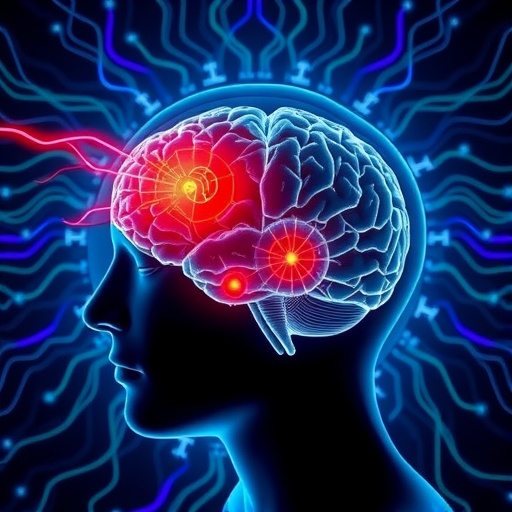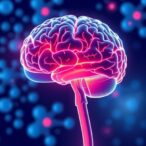
In a groundbreaking advancement that promises to reshape the landscape of epilepsy treatment, researchers have unveiled a novel closed-loop electrical stimulation system capable of halting the progression of focal epilepsy and safeguarding against long-term memory impairment. This innovative approach, detailed in a recent study published in Nature Neuroscience, harnesses real-time neural feedback to deliver precisely timed electrical pulses to epileptogenic brain regions, interrupting pathological activity before it can evolve into debilitating seizures. Such a technique not only curtails seizure frequency and severity but also protects critical cognitive functions, addressing dual challenges that have historically limited therapeutic options.
Focal epilepsy, characterized by seizures originating in localized brain regions, afflicts millions worldwide and often leads to progressive neurological deterioration. Traditional treatment regimes, primarily pharmacological, frequently fail to provide adequate control for drug-resistant cases. Moreover, uncontrolled seizures are linked to cumulative damage in neural circuits, resulting in cognitive deficits, including impairments in learning and memory. Therefore, an intervention capable of intervening dynamically during seizure onset holds enormous clinical potential.
The study’s core innovation lies in the deployment of a closed-loop system that continuously monitors electrophysiological signals from the epileptic focus. Unlike open-loop stimulation devices that deliver pre-programmed pulses irrespective of ongoing brain dynamics, this system analyzes neural activity via sophisticated algorithms to detect early markers of seizure initiation. Upon identification, it triggers instantaneous targeted electrical stimulation designed to disrupt aberrant neural firing patterns. This feedback-driven approach aligns treatment delivery precisely with neural events, maximizing therapeutic efficacy while minimizing unwarranted stimulation.
.adsslot_QFy6vw97ra{ width:728px !important; height:90px !important; }
@media (max-width:1199px) { .adsslot_QFy6vw97ra{ width:468px !important; height:60px !important; } }
@media (max-width:767px) { .adsslot_QFy6vw97ra{ width:320px !important; height:50px !important; } }
ADVERTISEMENT
Technical rigor marks the design of the stimulation protocol. Researchers integrated multi-channel intracranial electrodes with real-time signal processing units capable of capturing high-fidelity local field potentials. The detection algorithms employ machine learning classifiers trained on extensive datasets to differentiate physiological oscillations from pathological spike patterns. Such precision allowed the device to respond within milliseconds of seizure onset, a temporal window critical for effective intervention. Through iterative tuning, stimulation parameters were optimized to suppress hyperexcitable neuronal populations without compromising surrounding tissue integrity.
Animal models of focal epilepsy served as the testing ground, where the closed-loop device demonstrated remarkable outcomes. Treated subjects exhibited a significant reduction in seizure frequency compared to controls receiving sham or open-loop stimulation. Notably, chronic monitoring revealed that this intervention not only controlled acute episodes but impeded the gradual expansion of epileptic networks. This finding suggests that timely disruption of pathological activity can influence the disease’s natural course, offering a form of neuroprotection previously unattainable through conventional methods.
Beyond seizure metrics, cognitive assessments revealed another compelling benefit: preservation of long-term memory functions. Epilepsy-associated memory impairment has posed a particularly stubborn clinical challenge, likely due to repeated seizure activity damaging hippocampal circuits critical for memory consolidation. In the study, subjects receiving closed-loop stimulation retained performance on memory tests comparable to healthy counterparts, markedly outperforming untreated groups. This outcome provides compelling evidence that arresting epileptic progression can concurrently safeguard essential neural processes underlying cognition.
Mechanistically, the electrical stimulation appears to recalibrate neural network excitability, restoring balance between excitatory and inhibitory circuits. By targeting hyperactive neurons with brief, temporally precise pulses, the device interrupts positive feedback loops that lead to hypersynchronization, a hallmark of seizure genesis. This intervention prevents pathological neuronal recruitment from extending beyond the initial focus. Additionally, the minimally invasive stimulation avoids triggering compensatory maladaptive plasticity, a risk associated with continuous or poorly timed neuromodulation.
The translational implications are profound. Current neuromodulatory therapies such as vagus nerve stimulation or deep brain stimulation partly mitigate symptoms but lack the adaptive, real-time responsiveness demonstrated here. Moreover, the ability to arrest disease progression and reverse cognitive decline could transform prognosis for patients with refractory epilepsy. This closed-loop paradigm may herald a new era of personalized neurotherapeutics where seizure control and neurocognitive preservation are simultaneously achievable goals.
Achieving these results required overcoming significant engineering challenges. The system’s hardware had to balance miniaturization and power efficiency with the demands of rapid signal acquisition and processing. Wireless telemetry enabled continuous monitoring in freely moving subjects, essential for assessing efficacy in naturalistic settings. Algorithmic robustness was ensured through rigorous cross-validation and iterative refinement. Together, these advances culminated in a device capable of seamlessly integrating into the brain’s dynamic milieu and exerting therapeutic influence precisely when needed.
Importantly, safety profiles attested to the system’s clinical viability. The stimulation intensities employed remained well below neurotoxic thresholds, and histological analyses confirmed absence of tissue damage or gliosis following prolonged implantation and stimulation periods. Behavioral observations indicated no adverse side effects such as anxiety or motor deficits, further supporting the tolerability of the approach. These findings raise optimism for future human trials where safety remains paramount.
The implications extend into broader neuroscience realms by exemplifying how brain-computer interfaces can modulate pathological activity through closed-loop interventions. This research underscores the potential for leveraging neural biomarkers to guide on-demand therapy, a concept applicable to diverse neurological disorders characterized by aberrant network dynamics. The study’s success may accelerate the development of adaptive neuromodulation technologies aiming to restore circuit homeostasis in conditions such as Parkinson’s disease, depression, and chronic pain.
Nevertheless, several questions remain to be addressed in the path toward clinical translation. Scaling these systems for human application requires ensuring long-term device durability, regulatory approvals, and integration with existing diagnostic workflows. Furthermore, individual variability in epileptic foci and seizure phenotypes necessitates customization of detection algorithms and stimulation protocols. Future investigations will need to refine patient-specific models and validate efficacy across heterogeneous populations.
Ethical considerations also emerge as closed-loop neuromodulation becomes more widespread. Balancing intervention benefits with potential unintended alterations in neural function warrants careful oversight. The possibility of device hacking or malfunction highlights the necessity for security measures in implantable neurotechnology. Patients’ informed consent and autonomy in managing such devices will be critical as neuroengineering interfaces intertwine increasingly with personal identity and cognition.
In conclusion, the demonstration that closed-loop electrical stimulation can simultaneously prevent focal epilepsy progression and preserve long-term memory represents a landmark achievement. This convergence of neuroscience, engineering, and clinical strategy not only offers hope for improving lives of those affected by epilepsy but also sets a precedent for adaptive neurotherapeutics in a range of brain disorders. The next frontier lies in refining, scaling, and deploying this technology to unlock its full transformative potential.
Subject of Research: Closed-loop electrical stimulation applied to prevent progression of focal epilepsy and associated long-term memory impairment.
Article Title: Closed-loop electrical stimulation prevents focal epilepsy progression and long-term memory impairment.
Article References:
Ferrero, J.J., Hassan, A.R., Yu, Z. et al. Closed-loop electrical stimulation prevents focal epilepsy progression and long-term memory impairment. Nat Neurosci (2025). https://doi.org/10.1038/s41593-025-01988-1
Image Credits: AI Generated
Tags: closed-loop electrical stimulationcognitive function protectiondrug-resistant epilepsy solutionselectrophysiological monitoringepilepsy progression haltingfocal epilepsy treatmentinnovative epilepsy therapiesmemory preservation techniquesNature Neuroscience studyneurological deterioration preventionreal-time neural feedbackseizure frequency reduction



